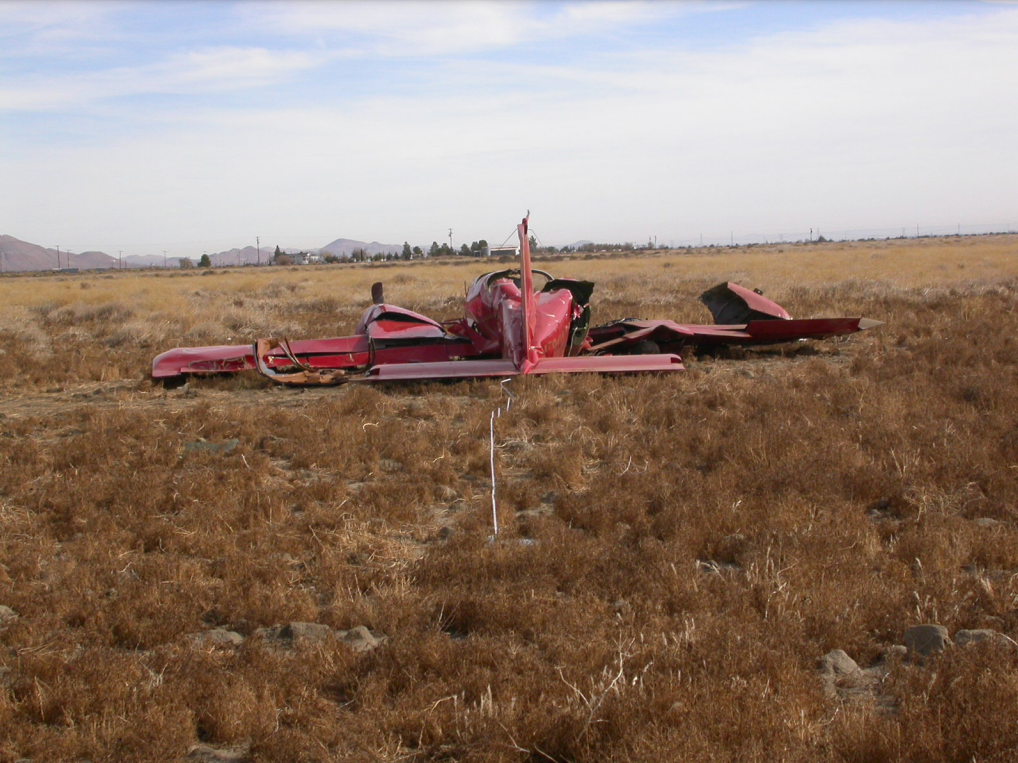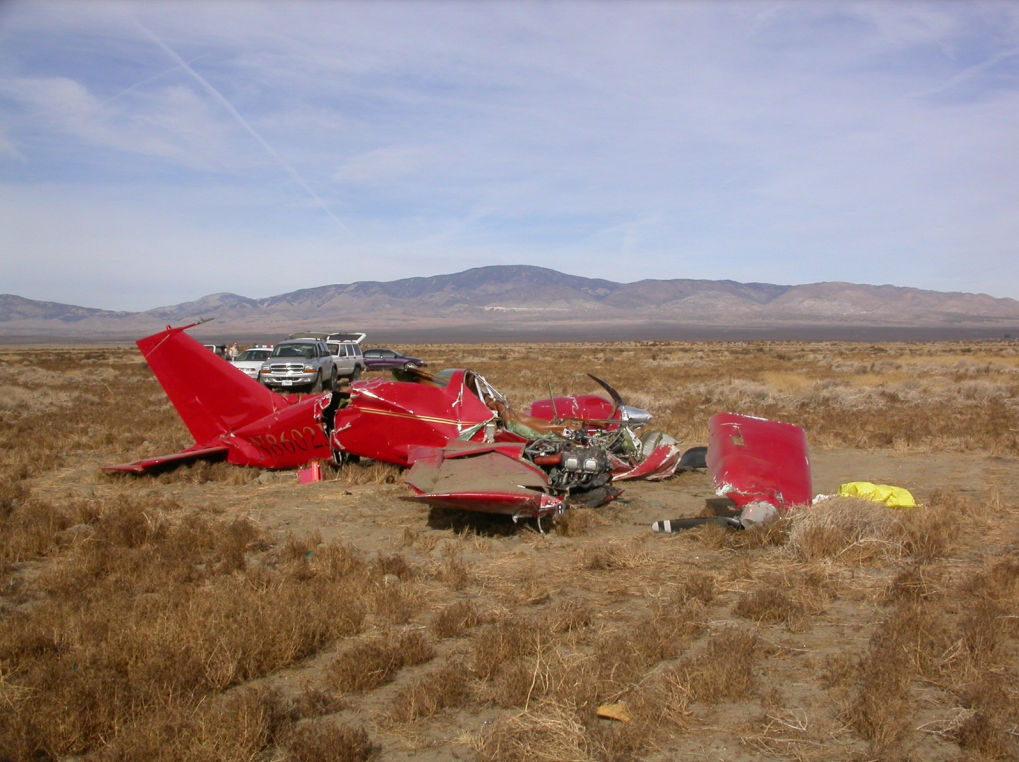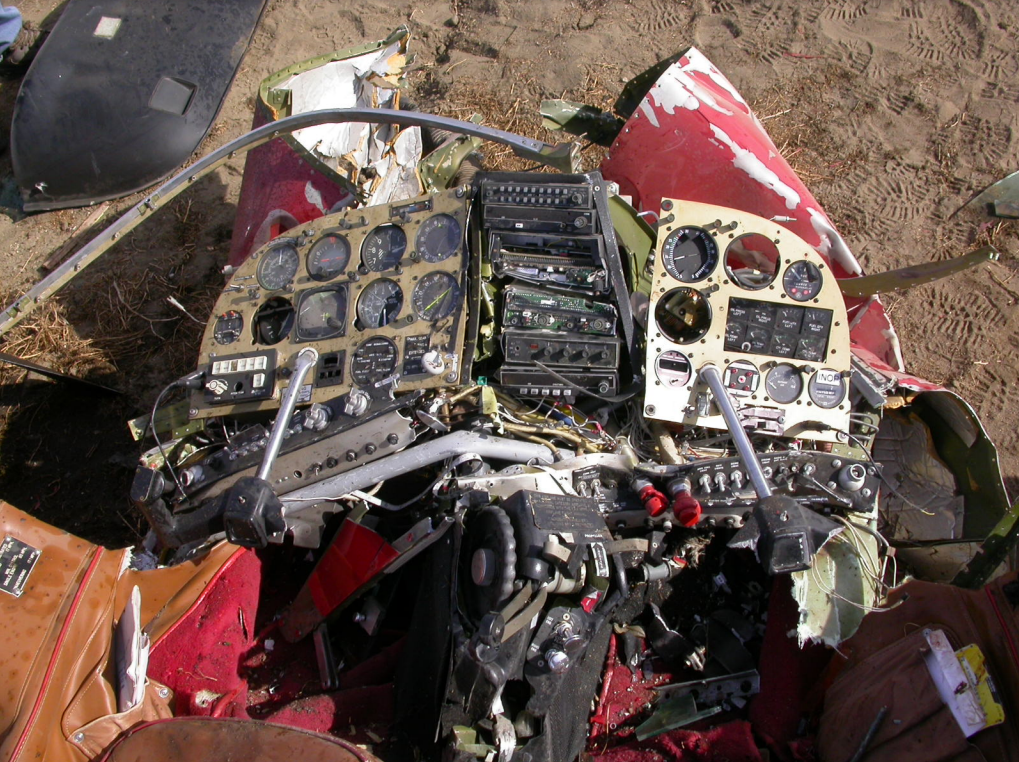
ASN Wikibase Occurrence # 45003
This information is added by users of ASN. Neither ASN nor the Flight Safety Foundation are responsible for the completeness or correctness of this information.
If you feel this information is incomplete or incorrect, you can submit corrected information.
| Date: | Thursday 4 December 2003 |
| Time: | 08:54 |
| Type: | Wing Aircraft D-1 |
| Owner/operator: | National Test Pilot School (NTPS) |
| Registration: | N8602J |
| MSN: | 9 |
| Total airframe hrs: | 936 hours |
| Engine model: | Lycoming IO-320-B1C |
| Fatalities: | Fatalities: 2 / Occupants: 2 |
| Aircraft damage: | Destroyed |
| Category: | Accident |
| Location: | Rosamond, CA -
 United States of America United States of America
|
| Phase: | Manoeuvring (airshow, firefighting, ag.ops.) |
| Nature: | Training |
| Departure airport: | Mojave Air & Space Port, CA (MHV/KMHV) |
| Mojave Air & Space Port, CA (MHV/KMHV) | |
| Investigating agency: | NTSB |
| Confidence Rating: |
On December 4, 2003, at 0854 Pacific standard time, a Wing Aircraft, D-1, N8602J, collided with desert terrain while maneuvering about 11 nautical miles (nm) west-southwest of Rosamond, California. The National Test Pilot School (NTPS), located in Mojave, California, operated the airplane under the provisions of 14 CFR Part 91. The multiengine airplane was destroyed by impact forces. The airline transport pilot, who was acting as a flight instructor, and the student were fatally injured. Visual meteorological conditions prevailed, and a company flight plan was in effect. The instructional familiarization flight originated from runway 26 at the Mojave Airport, approximately 0832.
Following maneuvers during an instructional flight under visual meteorological conditions, the airplane departed from controlled flight, stalled, and entered a spin. In the uncontrolled descent, the airplane impacted desert terrain and was destroyed by impact forces. Wreckage was located over a 65-foot-wide, 122-foot-long north-northeasterly path less than 1/4-mile from the last radar recorded location. A circular area around the airplane was devoid of vegetation. The airplane was examined on-scene and following its recovery. Fuselage and cockpit structure was found partially collapsed in a downward direction. The continuity of the flight control system was confirmed, and no evidence of preimpact mechanical malfunction was found. The purpose of the flight was for the flight school's instructor to provide initial training to a foreign student pilot, who was an instructor pilot in military aircraft, and to familiarize him with the flight characteristics of the airplane prior to the student's enrollment in a test pilot program. The foreign pilot was not qualified to act as pilot-in-command of the accident airplane. The flight school's instructor was current in the accident airplane. The syllabus for the planned 1-hour-long familiarization flight included stalls, with the landing gear and wing flaps retracted and extended, in addition to velocity minimum control demonstrations. The instructor pilot was to demonstrate a maneuver followed by the student performing the maneuver. A review of radar data indicated that the airplane was maneuvered through a series of stalls from 0847 until 0853. At 0853:20, the airplane's altitude indicated 5,900 feet. At 0853:49, the altitude indicated 3,500 feet, and the groundspeed decreased to 60 knots, where it remained until the airplane disappeared from radar at 0853:54. The airplane's radar position remained relatively constant during the final seconds of recorded flight, as the airplane descended at 5,000 feet per minute until impacting 2,600 foot mean sea level (msl) terrain. It was not determined whether one or both of the pilots were handling the controls at the time the spin commenced. Flight records from the test pilot school indicated that the student had accrued one flight in a multiengine airplane, with a flight time of 1.2 hours. His total flight time was about 1,531 hours with the majority of his flight time accrued in F16 type military aircraft. The instructor, who was the director of flight operations and the flying safety officer for the school, had a total flight time of about 5,767 hours. An estimated 122 hours had been accumulated in the accident make and model airplane, with 27.4 of those hours accumulated in the past year. The weight and balance data was found to be within acceptable limits for the flight. The airplane flight manual prohibited the performance of spins. No determination could be made as to which pilot may have been manipulating the controls at the time of the departure from controlled flight.
Probable Cause: The flying pilot's failure to obtain/maintain control of the airplane during practice stalls, which resulted in the inadvertent entry into a spin.
Accident investigation:
 |
|
Sources:
NTSB: https://www.ntsb.gov/_layouts/ntsb.aviation/brief.aspx?ev_id=20031230X02103&key=1
Location
Images:




Photos: NTSB
Revision history:
| Date/time | Contributor | Updates |
|---|---|---|
| 28-Oct-2008 00:45 | ASN archive | Added |
| 21-Dec-2016 19:24 | ASN Update Bot | Updated [Time, Damage, Category, Investigating agency] |
| 08-Dec-2017 20:27 | ASN Update Bot | Updated [Source, Narrative] |
Corrections or additions? ... Edit this accident description
The Aviation Safety Network is an exclusive service provided by:


 ©2024 Flight Safety Foundation
©2024 Flight Safety Foundation